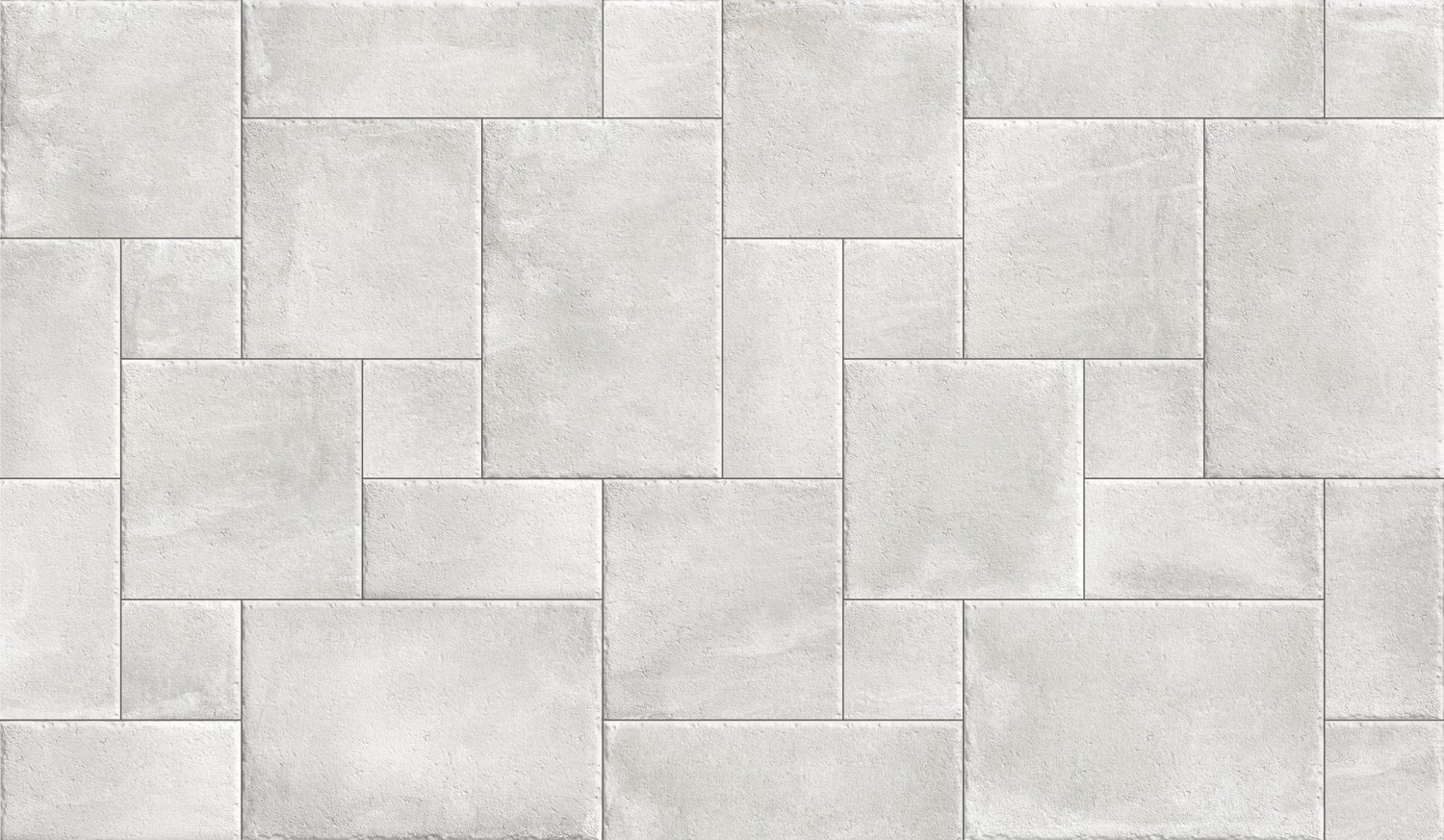All about French Pattern Tiles and laying them
The European style of architecture has been an inspiration for several architects and builders. One such design is the French Pattern Floor style that has created many photogenic spaces inside homes.

The European style of architecture has been an inspiration for several architects and builders. The thoughtful designs, intelligent engineering and smart machinery laid the foundation for modern architecture. One such design is the French Pattern Floor style that has created many photogenic spaces inside homes.
What is French Pattern?
When natural stone floors are laid in French Patterns, it means they are laid in a combination of small and large squares and rectangles. This modular pattern looks a like a jigsaw puzzle in a repetitive pattern. French Pattern paving gives a distinct look to the floor, both indoor and outdoor. French pattern arrangement is also known by other names, like 'Versailles' and 'Ashlar' patterns. Many users also call it the Roman Pattern.
The benefits of French Pattern
French Pattern Tiles arranged in a unique way look gorgeous, especially when laid with spaces and grout in a contrasting colour.
When your floor space can look elegant and different, why stick to boring floor tiles? French Pattern paving offers a touch of grace with varied sizes of stones and brings the flavour of European constructions from history. French Pattern looks quite impressive, particularly with Travertine Tiles. French pattern travertine is well renowned for its distinctive designs and has a knack for becoming the centre of attention wherever it is utilized, whether indoors or out. They are suitable for living rooms, bedrooms, and outdoor spaces like patios and swimming pools.
The French pattern could either be tile or pavers. The tiles are used indoors while the pavers are used outdoors. Ideally, Tiles measure at least 12mm thick and pavers come in 30mm thickness.
French Pattern Travertine
For those who are still unclear about what Travertine is, it is a light-coloured natural stone that is frequently used for construction. It is a form of limestone with streaks and natural pores on the surface. A well-known example of this is the Roman Colosseum, which was built primarily with travertine.
If you are looking to add a pattern to their natural stone flooring, the French pattern in travertine is regarded as the best option. This is the rationale behind the introduction of the popular Travertine French pattern, which can be found both indoors and outdoors. Instead of merely the typical linear pattern, they prefer a beautiful flooring layout. Travertine French patterns may come with chiselled, tumbled, and straight edges.
French pattern travertine is preferred by all contractors and homeowners since it does not require cutting each piece into a specific design, which saves them a lot of money and time. While some homes with French pattern travertine tiles have tumbled or straight edges, others may have chiselled edges. Each will produce a unique effect based on your needs. Since people started to express a strong interest in the European old-world style, which has been employed increasingly around outdoor spaces, the demand for these types of patterns has expanded significantly over the past few years. The trend continues to grow.
The arrangement of French Pattern Tiles or Pavers
This style can be obtained using a combination of two pieces of 406 x 406mm, one piece of 610 x 406mm, one piece of 406 X 203mm and two pieces of 203 x 203mm size Travertine pavers or tiles.
Travertine's special qualities enable us to employ it in a variety of settings, where it merges seamlessly. If you intend to use it, be sure to carefully adhere to these instructions. Always figure out how many tiles you will need to complete the project, and then add 15% extra for cutting.
The types of stones that can be used for French Pattern arrangement
The most used stone for French Pattern layout is Travertine. They also come in Limestone and Marble. A few stone suppliers also supply French Pattern in Porcelain.
The outstanding and beautiful option for tiles and pavers with French patterns is Travertine. These stones add beauty and elegance to contemporary homes and buildings after being used for millennia to construct monuments and large-scale projects. The material may be moulded to meet any installation type, whether it is indoor or outdoor.
After Travertine, Limestone French pattern tiles are the greatest choice. Limestone is easy to install because it is simple to work with. Natural light accentuates the area and makes it appear larger and more vibrant. Because there is less colour and texture variation in this natural stone, the French Pattern flooring has a continuous design. Both subtle tones and strong hues like grey and black are found in limestone. The floor area appears captivating when laid out in a French Pattern.
Sandstone is a popular material for interior design because of its patterns that resemble beach sand. The colour scheme of beige and red is extremely appealing. This natural stone has historically been employed in several enduring architectural designs. Sandstone is simple to work with and simply cut to the required sizes. Installation costs are therefore within the budget. With Sandstone French Pattern tiles, indoor floor spaces like the living room and outdoor spaces like balconies or shaded patios come to life. Living plants and complementary furniture naturally lend elegance to the flooring area.
Installing French Pattern Tiles
Please ensure you have the necessary supplies on hand, especially the set of French pattern tiles. The remaining supplies, such as the backer board, thin-set, trowel, tile saw, a five-gallon bucket, a thin-set mixing paddle, grout, a grout sponge, a drill, a chalk line, a grout and natural stone sealant, a straight edge, and a backer board scoring knife, can then be gathered. Here are the steps of installing the tiles or pavers:
- Take measurements of the area where the tiles will be installed. By multiplying the length and width, determine the square foot area. If the room is irregularly shaped, divide it into squares and then sum the individual square areas. The area in square inches is equal to the length in inches times the width in inches, and the area in square feet is calculated by dividing the result by 144.
- Start by removing the tiling and exposing the cement bed. A cement board is suitable for DIY projects because it is simple to use. Ensure that the base floor is prepared properly.
- Apply the thin-set - Mix the thin-set in a bucket in accordance with the directions on the container and distribute it using a trowel. Before you place the travertine tiles in the French pattern, allow them 24 hours to cure.
- Lay out the French pattern travertine tiles before you begin the installation. Create a visual guide using the chalk line. To ensure that the tiles fit properly in place, measure and cut their edges.
Overall
If you want a striking and distinctive design for your home, French pattern travertine tiles are always an excellent choice. French Pattern layout adds a touch of opulence to the dullest of floor spaces. It saves time and money. The arrangement offers versatility while breaking the monotony of space. In addition to Travertine, Sandstone, and Limestone, Marble is a common option in homes. For flooring in the French Pattern style, you can choose any natural stone if you keep in mind your budget and the installation area.
Click Here to Visit
What's Your Reaction?





















